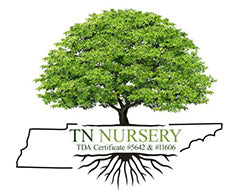





























About Long Blooming Perennials
Long blooming perennials are an invaluable addition to any landscape for several compelling reasons. These plants provide many benefits that enhance the aesthetic appeal, ecological diversity, and overall functionality of a garden or outdoor space. Here are some key advantages of incorporating long-blooming perennials into your landscape design.
First and foremost, they extend the visual interest of your landscape throughout the growing season. Unlike annuals that typically flower for just a few weeks, these perennials keep their blooms coming for an extended period, often spanning several months. This prolonged flowering period ensures that your garden remains vibrant and colorful from early spring to late fall, creating an ever-changing and delightful outdoor environment for you to enjoy.
Additionally, they offer versatility in design and planning. You can strategically incorporate them into various parts of your landscape, from flower beds and borders to mixed plantings and container gardens. Their extended bloom time allows you to create dynamic and harmonious compositions, making achieving your desired aesthetic goals easier.
Furthermore, these perennials can attract pollinators and beneficial insects, contributing to the ecological health of your garden. As they continue to produce nectar and pollen throughout the season, they serve as essential food sources for bees, butterflies, and other pollinators. This supports local biodiversity and helps to ensure the pollination of different plants in your garden, leading to better fruit and seed production.
They can also save you time and effort in garden maintenance. Since they persistently produce flowers, they reduce the need for frequent replanting and replacement, as is often required with annuals. This translates to lower maintenance costs and less labor-intensive gardening, allowing you to enjoy your landscape with minimal hassle.
Long Blooming Perennials Improve Soil Health
Moreover, these perennials can contribute to the overall health of your garden's soil. Their extended root systems help improve soil structure, enhance water retention, and reduce erosion. As they return year after year, they add organic matter to the soil, enriching it and promoting a healthier ecosystem for plants and soil-dwelling organisms.
They also allow you to enjoy a broader range of colors, shapes, and sizes in your garden. With careful selection, you can create captivating combinations of perennial species and cultivars that suit your preferences, complement your overall design, and evoke different moods throughout the seasons.
In conclusion, long blooming perennials are valuable to any landscape. They extend the beauty of your garden, support wildlife, reduce maintenance efforts, improve soil health, and offer endless design possibilities. By integrating these enduring plants into your landscape, you can create a vibrant, sustainable, and ever-evolving outdoor space that brings joy and beauty year after year.

